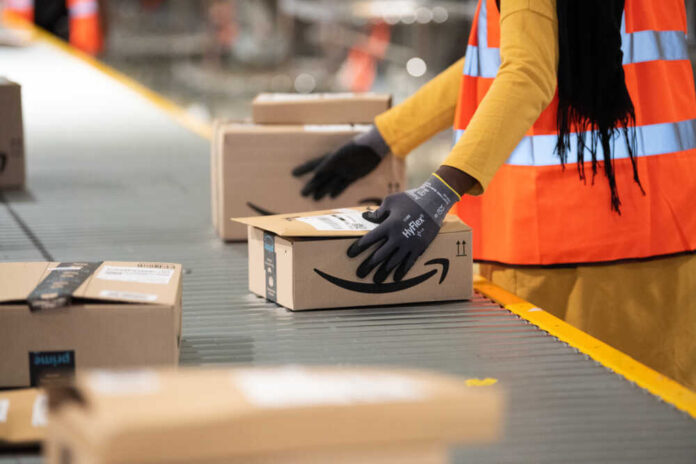An AMAZON employee was killed in one of the company’s warehouses.
The incident occurred last month when the worker was working a shift at the Ffordd Amazon site in Swansea, which is situated along Swansea Bay in Wales, United Kingdom.
Two ambulances were sent to the location, and Amazon says it aims to investigate thoroughly.
According to a spokeswoman for the Welsh Ambulance Service, the event was reported to have occurred on September 20 at 11:39 p.m. They sent a pair of ambulances and a paramedic from the Cymru high-acuity response team. An individual required further care and was sent to Morriston Hospital.
Despite initial efforts to save him, doctors at Morriston Hospital declared him dead.
A representative for the company stated the occurrence is heartbreaking and that the company is thinking about the worker’s loved ones. They are undertaking a comprehensive investigation while offering assistance to his coworkers at the location.
A report from May shows the Amazon warehouse in Fort Wayne, Indiana, lost a 20-year-old worker.
According to witnesses, Caes Gruesbeck was driving a one-man lift below an overhead transportation system when he sustained a brain injury. The employee was wearing a hard helmet and safety harnesses.
An article details how a malfunctioning Amazon warehouse robot in 2018 sent 24 employees to the hospital after it ripped open a container of bear repellant.
It was an example of a worrying trend. Research has shown that Amazon warehouses have an alarmingly high incidence of major worker injury, a rate that has only increased since the company began using warehouse robots.
Documents obtained reveal that working conditions at Amazon facilities are far more unsafe than previously admitted. The issue has been exacerbated by recent measures to increase productivity, such as by raising labor quotas or the number of robots in use.
According to reporting, the data corroborates assertions made by warehouse employees that Amazon’s leadership increased labor quotas to the point that even achieving them is risky for human workers due to the threat posed by the robots.


















